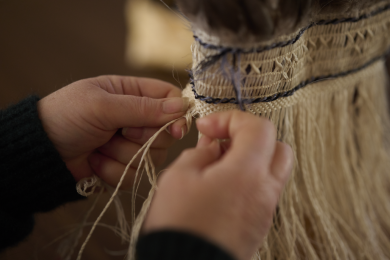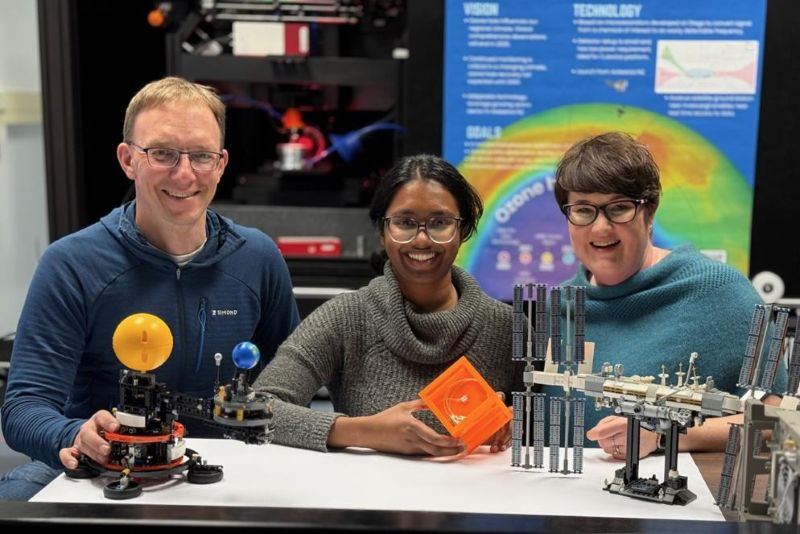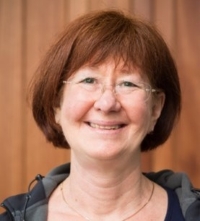First Māori-led or partnered Te Whai Ao research projects

Following a rigorousprocess led by the Deputy Director Māori, Katharina Ruckstuhl, two applicationswere successful: that of Dr Nathaniel Davis for his project: Harnessing Te Rā:Photon Splitting Solar Cells; and another by Professor Blair Blakie: Quantum Weaving: Connecting Quantum Fluids with Mātauranga Māori(traditional knowledge).
Harnessing Te Rā: Photon Splitting SolarCells - Dr Nathaniel Davis
This project looks to support energy transitions by ‘splitting’ photons in half to create more efficient solar cells. Currently, most photovoltaic cells (PVs) are expensive to manufacture and waste a vast amount of energy. This project uses a new patented hybrid material to create PVs that can increase the maximum efficiency.
This may present a real opportunity for NZ, with huge investment in solar and battery infrastructure, including from Māoriorganisations. Māori are looking for ways to build energy resilience and to invest in future energy technologies. This is reminiscent of how Māui and his brothers improved their livelihoods by harnessing the sun, Tamanuiterā, with the technology of those times. There will be the opportunity to engage enterprises already invested in battery and solar infrastructure to explore opportunities for Māori-led solar cell manufacturing or technology.
Another insight from the pūrakau(narrative) is that Māui needed help from his brothers to achieve that feat. Part of the project will use a tuakana/teina [older/younger] capability approach to help Māori students develop skills in fabrication and testing ofthe solar cells to improve PV efficiency from a ‘standard’ maximum ≈ 32% to42%. The hybrid PV material consists of two components, an organic interlayer of molecules which can undergo singlet fission (SF) (an excitation multiplication process) sandwiched between2D-layers of perovskite semiconductor material. The SF material transfers its multiple excitations to the perovskite material resulting in two excitationsper high-energy photon received, in essence cutting them in half.
The next step to validate the patent is to explore and test the new material system as active materials in PV cells.
Quantum Weaving: Connecting Quantum Fluids with Mātauranga Māori - Professor Blair Blakie, Associate Professor Katharina Ruckstuhl and Professor Russell Bissett
This project integrates mātauranga Māori, connecting theoretical quantum physics to traditional Māori weaving. It builds on a decade of ultracold atom manipulation, especially those atoms with magnetic properties, such as erbiumand dysprosium. Previous collaborative research has identified that quantumfluids of atoms with magnetic properties self-organise into stripe-likepatterns. The scientific goal of the project is to find the conditions where the system will self-organise into a braided or woven pattern. Project objectives include understanding the conditions to stabilise these woven quantum states, their mechanical and vibrational properties, and their formation dynamics.
But there’s another goal, and that’s to enrich NZ’s quantum physics research and strengthen reciprocal knowledgeexchange, generating new scientific insights informed by Māori knowledge. Theteam will spend time learning from Ngāi Tahu weavers. Through visits andworkshops, they will explore the practice of weaving, their pattern meanings,and narratives.
The project also aims to reconnect a distinguished Māori physicist based overseas, with his South Island iwi. Professor Russell Bisset (Ngāi Tahu) now lives in Innsbruck and is an Assistant Professor at the city’s university. This project will help show local tauira see for themselves what’s possible for a Māori quantum physicist.







